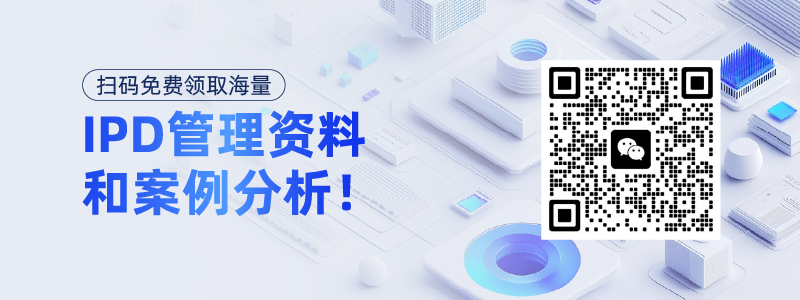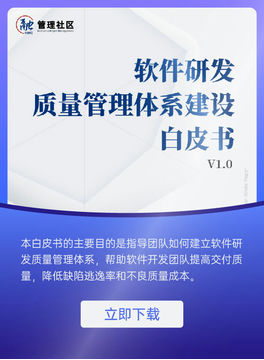Integrated Product Development (IPD) is a comprehensive product development management framework that has revolutionized the way companies approach product creation. It encompasses a set of best practices, processes, and principles designed to streamline product development, enhance collaboration across functions, and ultimately bring products to market faster and with higher quality. Huawei's adoption and refinement of IPD have been instrumental in its rise as a global technology powerhouse. The seven core ideas of IPD implemented by Huawei hold valuable lessons for high-tech companies aiming to thrive in the highly competitive landscape of 2025 and beyond.
IPD is not just a process; it's a strategic approach that aligns all aspects of an organization towards a common goal of delivering successful products. By integrating functions such as marketing, R&D, manufacturing, and sales from the very beginning of the product development cycle, companies can avoid costly rework, reduce time-to-market, and better meet customer needs. This holistic view of product development is crucial in an era where technological advancements are rapid, and customer expectations are constantly evolving. High-tech companies need to be agile, innovative, and efficient, and IPD provides the framework to achieve these objectives.
Huawei's experience with IPD serves as a prime example of how this framework can transform a company. Since implementing IPD, Huawei has been able to introduce a wide range of cutting-edge products in the telecommunications and consumer electronics sectors. The company's ability to quickly adapt to market changes, develop new features, and improve product performance is largely attributed to the effective implementation of IPD's core ideas. These ideas can be a guiding light for other high-tech companies looking to enhance their product development capabilities and gain a competitive edge in the market.
Customer-Centric Product Planning
At the heart of Huawei's IPD approach is a strong focus on the customer. Customer-centric product planning involves understanding the needs, wants, and pain points of customers and using this knowledge to drive product development. Huawei invests heavily in market research to gain insights into customer preferences, emerging trends, and unmet needs. By involving customers in the early stages of product planning, the company can ensure that the products it develops are relevant, useful, and appealing to the target market.
This customer-centric approach has several benefits. Firstly, it helps in developing products that solve real customer problems. Instead of creating products based on assumptions or internal ideas, Huawei tailors its offerings to address the specific challenges faced by customers. For example, in the smartphone market, Huawei has introduced features such as long battery life, high-quality cameras, and user-friendly interfaces based on customer feedback. These features have made Huawei's smartphones popular among consumers worldwide.
Secondly, customer-centric product planning enables companies to stay ahead of the competition. By being attuned to customer needs, Huawei can anticipate market trends and develop products that are ahead of the curve. This gives the company a competitive advantage as it can offer unique value propositions to customers. In the 5G technology space, Huawei's understanding of customer requirements for faster data speeds, lower latency, and seamless connectivity has allowed it to be at the forefront of 5G product development, enabling it to secure numerous contracts globally.
Cross-Functional Integration
Another key idea in Huawei's IPD is cross-functional integration. In traditional product development models, different departments often work in silos, leading to communication gaps, delays, and inefficiencies. IPD breaks down these silos by promoting collaboration and communication across functions. Huawei forms cross-functional teams that include representatives from marketing, R&D, manufacturing, procurement, and other relevant departments.
These cross-functional teams are responsible for the entire product development lifecycle, from concept generation to product launch and post-launch support. By working together from the start, team members can share their expertise, knowledge, and perspectives. For example, marketing team members can provide insights into market trends and customer preferences, while R&D engineers can offer technical solutions. Manufacturing experts can contribute to the design for manufacturability, ensuring that the product can be produced efficiently and at a reasonable cost.
Cross-functional integration also helps in making informed decisions quickly. Instead of going through a long chain of approvals and communication channels between departments, the cross-functional team can discuss and resolve issues in real-time. This leads to faster decision-making, which is crucial in a fast-paced high-tech environment. For instance, when developing a new wireless router, the cross-functional team can quickly decide on the features, design, and pricing based on the collective input from all members, ensuring that the product meets market demands and is launched in a timely manner.
Structured Product Development Process
Huawei follows a structured product development process as part of its IPD framework. This process is divided into distinct phases, each with well-defined goals, deliverables, and decision points. The phases typically include concept development, planning, development, verification, and launch. Having a structured process provides several advantages.
Firstly, it ensures consistency and predictability in product development. All projects follow the same set of guidelines and procedures, which helps in standardizing the development process. This makes it easier to manage multiple projects simultaneously and allocate resources effectively. For example, in the development of a new software application, the structured process ensures that all aspects such as requirements gathering, design, coding, testing, and deployment are carried out in a systematic manner, reducing the risk of errors and delays.
Secondly, a structured process enables better risk management. At each decision point in the product development lifecycle, the team assesses the risks associated with the project. If any issues or risks are identified, appropriate actions can be taken to mitigate them. For instance, during the verification phase, if a technical glitch is detected in a new smartphone prototype, the team can use the structured process to analyze the root cause, develop a solution, and ensure that the issue is resolved before the product is launched. This helps in delivering high-quality products that meet or exceed customer expectations.

Product Platform Strategy
Huawei's product platform strategy is an important aspect of its IPD approach. A product platform is a set of common components, technologies, and architectures that can be used as a basis for developing multiple products. By leveraging a product platform, Huawei can achieve economies of scale, reduce development time and costs, and improve product quality.
The product platform strategy allows Huawei to reuse existing components and technologies across different product lines. For example, the company may use a common chipset or operating system across its smartphone and tablet product lines. This reduces the need for redundant development efforts and enables faster time-to-market. Additionally, by standardizing on a common platform, Huawei can ensure better compatibility and interoperability between different products, enhancing the overall user experience.
Moreover, a product platform provides a foundation for innovation. Huawei can build on the existing platform by adding new features, improving performance, or integrating new technologies. This incremental innovation approach allows the company to continuously improve its products and stay competitive in the market. For instance, Huawei may introduce new camera features or enhanced battery management systems on its existing smartphone platform, providing customers with new and improved products without having to start from scratch.
Optimized Resource Allocation
Effective resource allocation is crucial in product development, and Huawei's IPD framework emphasizes optimizing resource allocation. Resources such as time, money, and human talent are limited, and it's essential to allocate them in the most efficient way possible to ensure the success of product development projects.
Huawei uses a data-driven approach to resource allocation. The company analyzes market demand, project requirements, and potential returns to determine how to allocate resources. For example, if a particular product line is expected to have high market demand and significant profit potential, more resources may be allocated to its development. This ensures that resources are focused on projects that are likely to generate the most value for the company.
In addition to financial and human resources, Huawei also pays attention to the allocation of technological resources. The company invests in research and development to build a strong technology portfolio and then carefully selects the technologies to be used in different product development projects. This strategic approach to resource allocation helps Huawei to make the most of its resources and achieve better results in product development.
Emphasis on Product Quality
Product quality is a top priority in Huawei's IPD framework. High-quality products are essential for customer satisfaction, brand reputation, and long-term business success. Huawei has a comprehensive quality management system in place that ensures products meet or exceed industry standards and customer expectations.
The quality management system starts from the early stages of product development. Huawei defines clear quality requirements and specifications for each product. These requirements are then translated into design and development guidelines. During the development process, strict quality control measures are implemented, including regular testing, inspections, and reviews. For example, in the manufacturing of network equipment, Huawei conducts rigorous tests to ensure the reliability and performance of the products under various conditions.
Huawei also focuses on continuous improvement of product quality. The company collects customer feedback and data on product performance after launch. This information is used to identify areas for improvement and make necessary enhancements in subsequent product versions. By constantly striving for better quality, Huawei can build customer loyalty and maintain its position as a leading provider of high-quality products in the high-tech industry.
Conclusion
In conclusion, Huawei's seven core ideas of IPD offer valuable insights and strategies for high-tech companies in their 2025 strategic planning. The customer-centric product planning ensures that products are developed to meet real customer needs, giving companies a competitive edge. Cross-functional integration breaks down departmental silos, enabling faster decision-making and more efficient product development. The structured product development process provides consistency, predictability, and better risk management.
The product platform strategy allows for economies of scale, faster time-to-market, and incremental innovation. Optimized resource allocation ensures that limited resources are used effectively to drive product success. And the emphasis on product quality builds customer loyalty and enhances brand reputation.
High-tech companies looking to succeed in the dynamic and competitive landscape of 2025 should consider adopting and adapting these IPD core ideas. By implementing these principles, companies can improve their product development capabilities, bring products to market faster, and deliver high-quality products that meet the evolving needs of customers. This will not only help them survive but also thrive in the highly competitive high-tech industry of the future. As the technological landscape continues to evolve, the lessons from Huawei's IPD implementation will remain relevant and valuable for companies aiming to achieve sustainable growth and success.
ARTICLE TITLE :How do Huawei's seven core ideas of IPD empower high-tech companies? 2025 strategic planning ,AUTHOR :ITpmlib

















